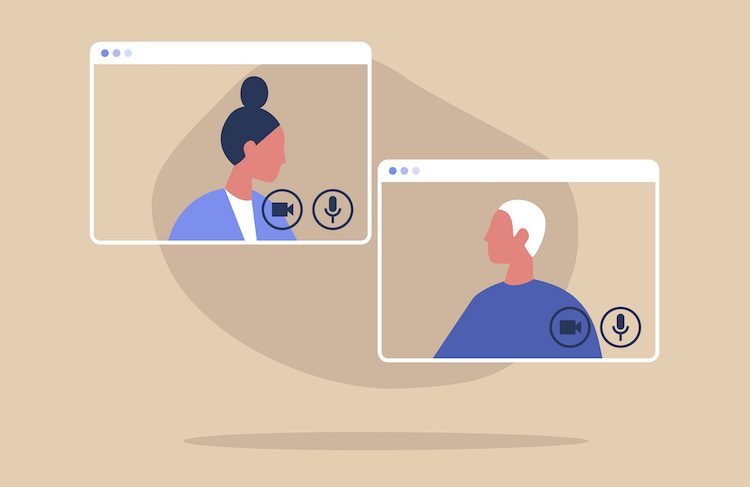As we enter a new year, organizations continue to adjust to the impacts of the COVID-19 outbreak, including an extension of work-from-home policies for many employees. As more time goes on between “what used to be” and “the new normal,” the need to establish updated procedures for employee-performance conversations has become imperative.
Employee performance conversations can be challenging for all involved, even without considerations related to working remotely during a pandemic. However, these conversations should still be a priority to ensure future productivity, maintain morale and let employees know you are invested in their performance as a member of the organization.
If your team is continuing with remote work, consider approaching performance conversations in a new way — thoughtfully, with compassion and with a structured plan for mutually beneficial results.
Here are five ways to improve remote employee evaluations.
Check in more often.
About three years ago, University of Phoenix did away with annual performance reviews in favor of quarterly check-ins. It was a smart move then, and it makes even more sense now.
More frequent, structured conversations can help offset the lack of in-person connectivity that naturally occurs in an office setting. It also allows managers to gauge whether employees are receiving the support needed to complete tasks, meet objectives and succeed in their roles in their work-from-home environment.
These regular check-ins should be used to make sure that expectations are clearly understood and that progress is being made. Remember that in many cases, remote employees are likely not working straight through from 9 to 5 every day, so this measure no longer applies.
Be compassionate but firm.
Leadership in a time of uncertainty requires emotional intelligence. Every employee has challenges, some work-related and some not. From the stress of helping children with online learning to managing anxiety and depression to caring for an elderly parent, each stressor can affect an employee’s work.
Communicating with understanding lets employees know you care about their overall well-being and don’t view them as a cog in a machine. This does not mean employees should be absolved of expectations or responsibilities. It does mean you may have to think creatively and make adjustments to support their success.
For instance, managers may need to consider flexible deadlines instead of rigid ones for noncritical work or reallocate resources to see a project or assignment through to completion. Rather than changing expectations, find solutions to achieve goals. This ensures continuity for the organization and shows employees you value them. Your return on investment will be in loyalty from your employees.
Reflect on the past, but focus on the future.
Managers sometimes make the mistake of using performance conversations to look backward only, missing the opportunity to look forward. While evaluating an employee’s past performance is important, it shouldn’t be the sole focus of your conversation. The past can be instructive, but you cannot change it.
Instead, leverage past experiences as a way to create future successes. Performance conversations should be less about what happened during the past quarter and more about how to align to achieve success moving forward. A manager should leave a performance conversation knowing what the employee needs to effectively accomplish goals, and the employee should leave knowing the expectations. If you can effectively communicate on both ends, successful outcomes should follow.
Rethink your rating system.
Around the time we did away with annual reviews, UOPX also nixed the traditional rating system, such as “needs improvement, meets expectations,” etc.
Putting labels on employees does not add value. In fact, employees can become so focused on the performance review label that it distracts from what matters most in a performance conversation — setting the employee up for success.
The value is in the coaching and the feedback, not an arbitrary label or rating. That focus is even more important now as we balance the stresses of the pandemic.
Camera on or camera off?
Prior to the coronavirus pandemic, I typically met with employees face-to-face for performance conversations, even if they telecommuted. There is value in seeing someone’s body language and hearing their tone of voice.
To personalize these conversations now, I prefer video calls to phone calls. It provides a sense of normalcy and allows for human connection. At the same time, I recognize that some employees may have reasons for keeping their camera off. In those situations, I always turn my camera on as the leader even if the employee feels more comfortable with their camera off. I want them to see they have my undivided attention.
While it may seem easier to delay performance conversations or even scrap them entirely, they are necessary now more than ever. Adjust your processes to best meet the needs of your employees, but do not do away with the opportunity to provide feedback and support for your team members.











